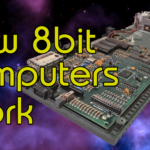Let’s look at FORTH, the obscure stack based programming language that nobody seems to use. Or do they?
After getting an Agon Light Z80 computer and discovering it can do things other than run BBC BASIC I went looking at other programs to run on it. I came across Agon-Forth and that got me thinking.
What’s the point of FORTH, why’s it barely used and is it really as awkward and strange as it appears? In this video I set off to find out for myself what FORTH was like.
This is not a history video or a programming video, this is a video of an experienced programmer trying to figure this bizarre language out. It uses both stacks and reverse polish notation and requires the programmer to keep track of the state of the stack as they’re programming. Not unlike how assembly programmers need to keep track of the registers.
I discovered it is indeed much quicker than BASIC, but that it’s so awkward to use I can see why it didn’t catch on and why computers such as the Jupiter Ace failed. When you’ve got a choice between slow but readable BASIC and quick but hard to understand FORTH, I can see why people chose BASIC.
But that doesn’t make it a bad language at all. On slow hardware FORTH is amazingly fast, and to the people who did use it the inconvenience of thinking in stacks and RPN probably wasn’t an issue. It seemed popular amongst science and academic computer users who wouldn’t have wanted to learn assembly, but would have been quite OK with learning RPN – their scientific calculators already used that style of data entry.




